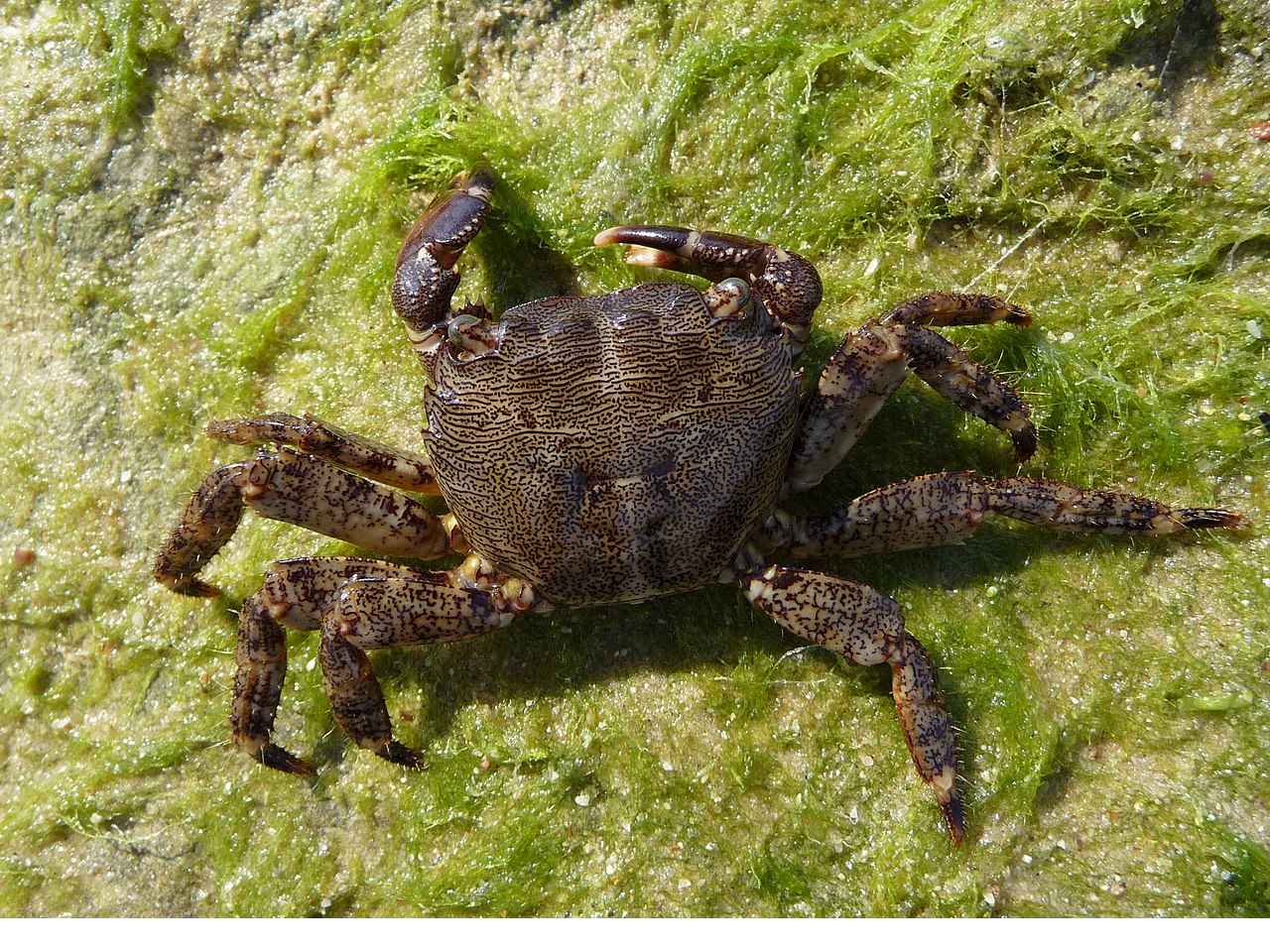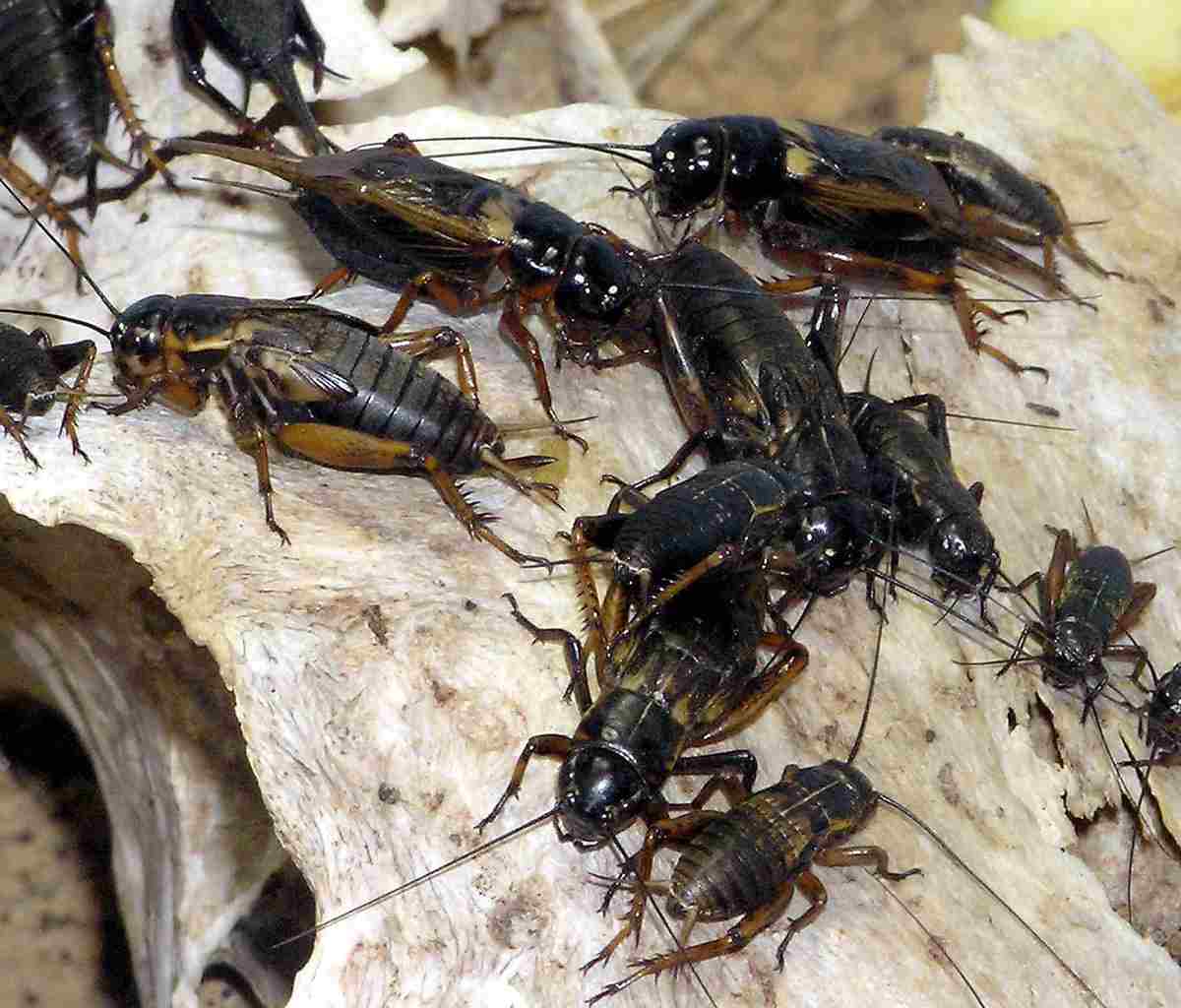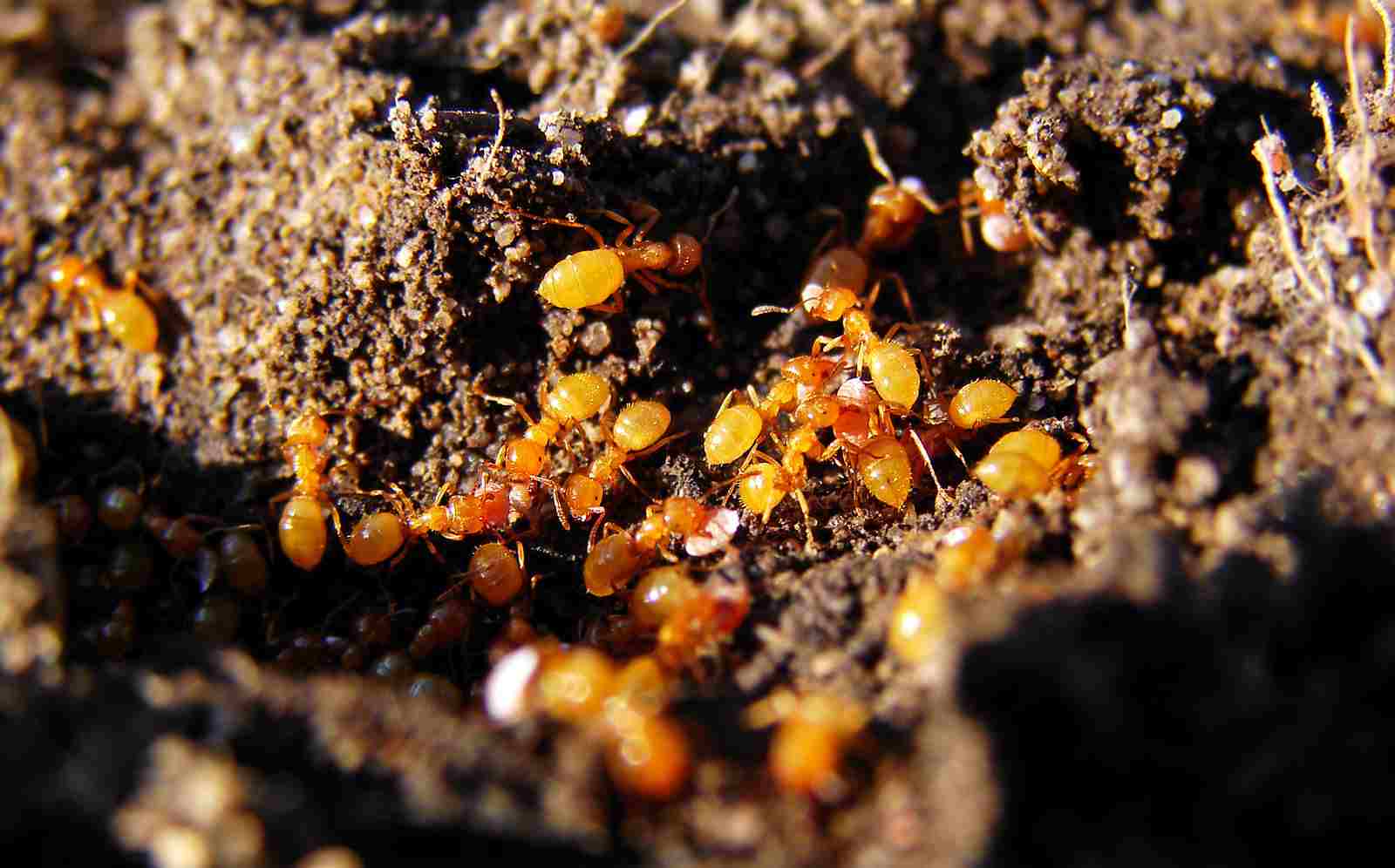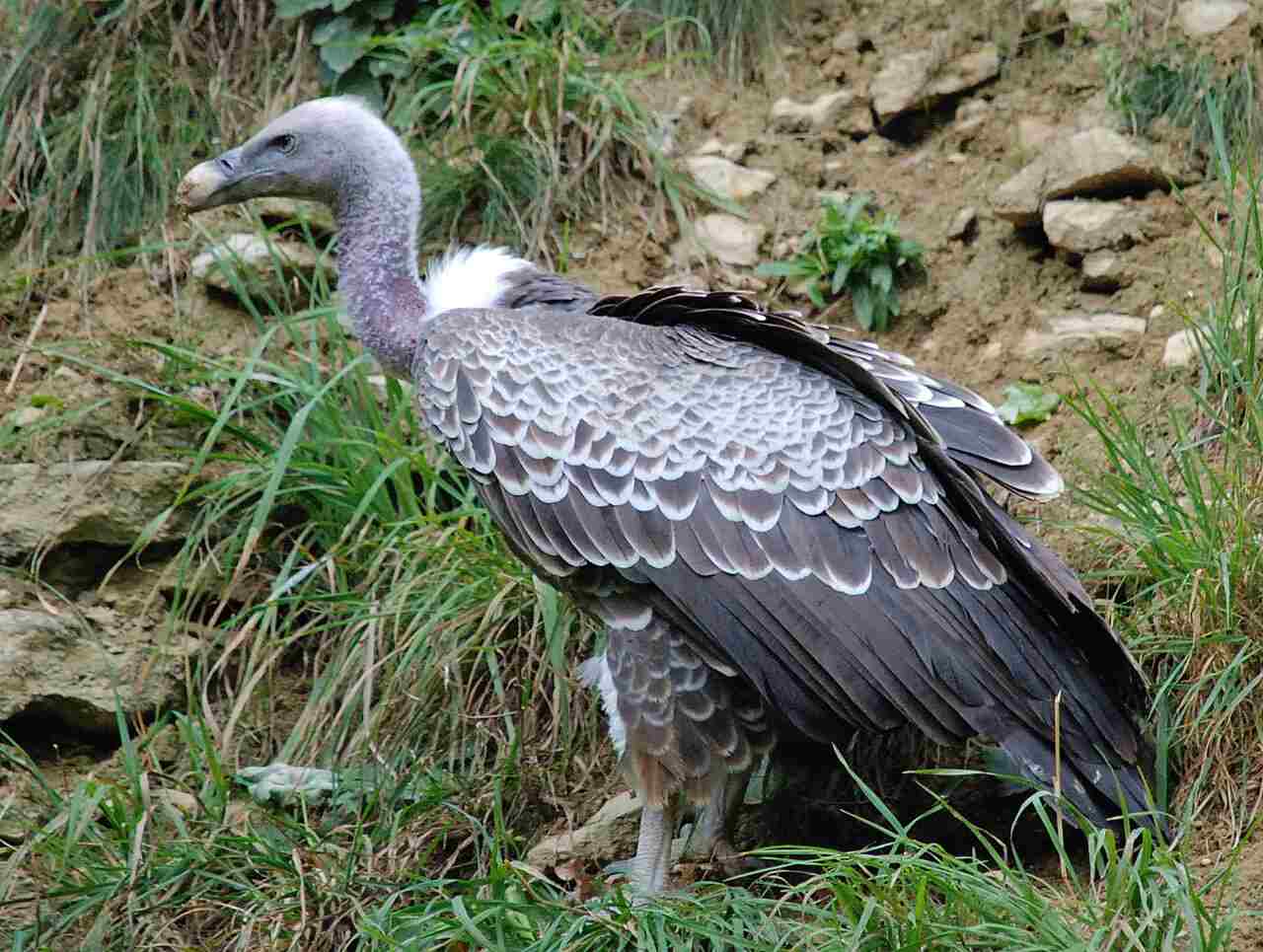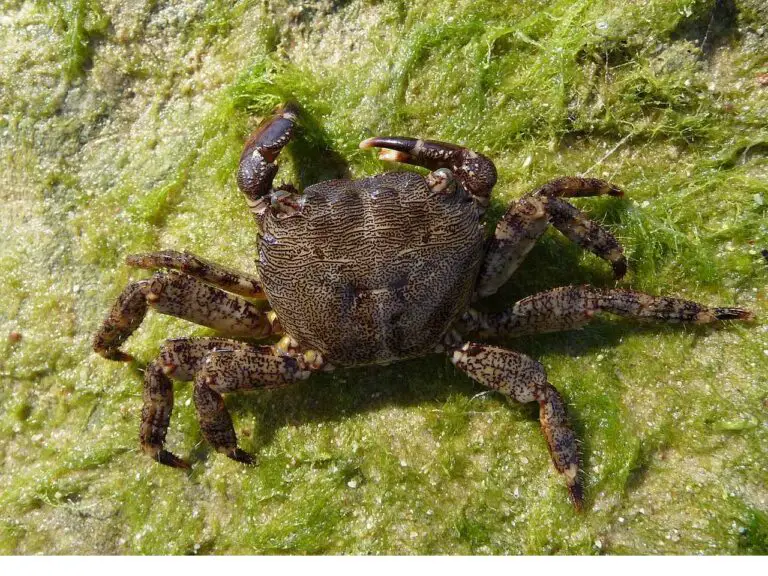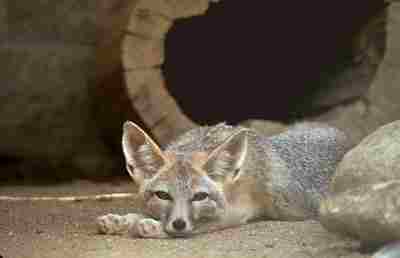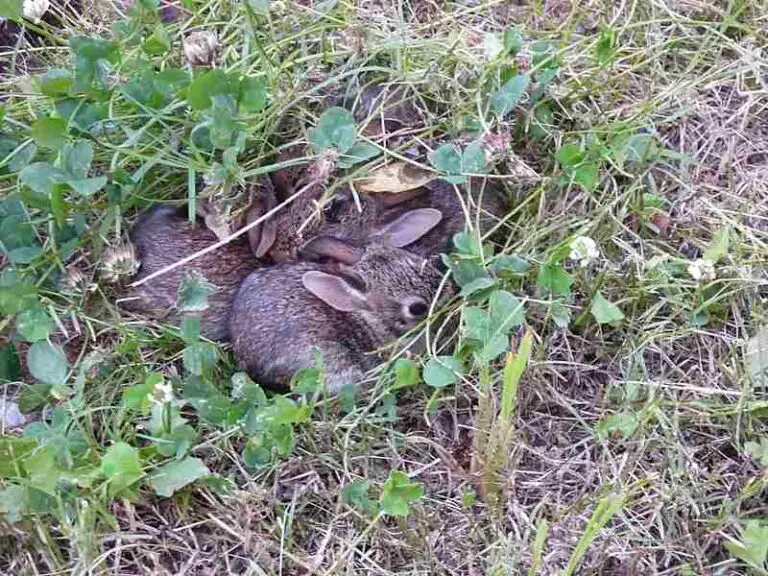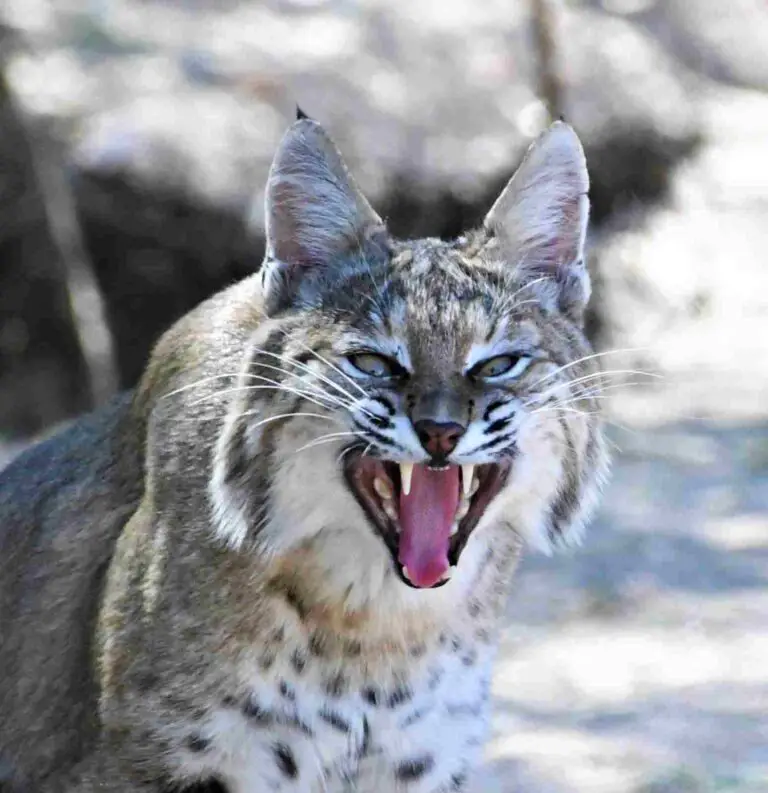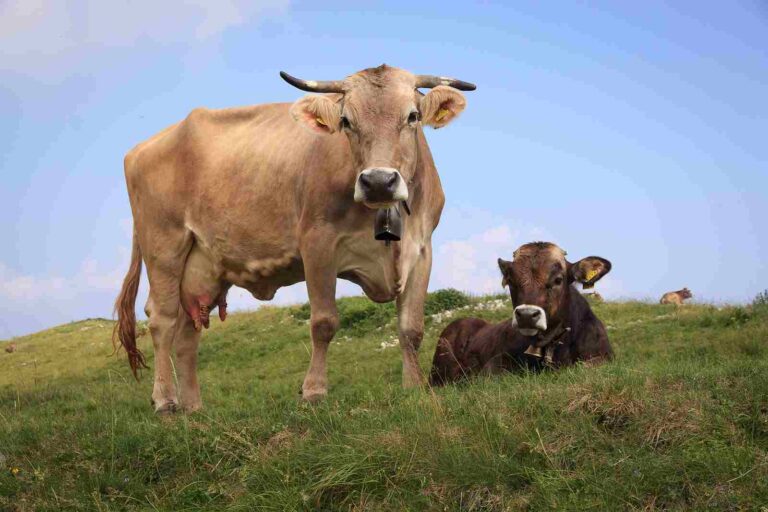Is Moss a Decomposer? Trophic Role of Mosses Uncovered
While moss is sometimes classified as a decomposer, it is important to note that it is not a true decomposer but rather a producer. This classification may vary in different studies and schools of thought. Moss does exhibit some characteristics that are used to classify it as a decomposer, but these criteria are limited.
One of the reasons why moss is sometimes considered a decomposer is because it often grows on organic substrates. This association with decaying organic matter can lead to the assumption that moss plays a role in the decomposition process. Additionally, moss indirectly contributes to biodegradation by providing a habitat for decomposer organisms such as bacteria and fungi.
Furthermore, moss is involved in the nutrient cycling process. It can absorb and retain nutrients from the environment, releasing them back into the ecosystem when it decomposes. This nutrient cycling function is another factor that contributes to the classification of moss as a decomposer.
However, despite these associations, moss is not a true decomposer. It is not a saprophyte, meaning it does not obtain its nutrients solely from dead organic matter. Mosses are not heterotrophs and do not possess detritivorous attributes. Instead, mosses are primarily photosynthetic organisms, capable of producing their own food through photosynthesis.
Why Moss is Viewed as a Decomposer
1). Moss Often Grows On Organic Substrate
Moss often grows and thrives on organic substrate, which is one of the reasons why it is sometimes considered a decomposer. Organic substrates, such as decaying leaves, logs, or soil, provide the necessary nutrients and moisture for moss to grow. Mosses have adapted to these environments and play a crucial role in the decomposition process.
When moss grows on organic substrate, it contributes to the breakdown of the material. As moss absorbs water and nutrients from the substrate, it also releases enzymes and acids that aid in the decomposition process. This indirect contribution to biodegradation helps to break down the organic matter and release nutrients back into the ecosystem.
Furthermore, mosses are involved in the nutrient cycling process. As they decompose organic material, they release essential nutrients, such as nitrogen and phosphorus, into the surrounding environment. These nutrients can then be utilized by other organisms, contributing to the overall health and productivity of the ecosystem.
2). Indirect Contribution to Biodegradation
Mosses, with their ability to grow on organic substrates, indirectly contribute to the process of biodegradation. This is one of the reasons why moss is sometimes classified as a decomposer. When mosses thrive on organic substrates, such as decaying leaves, logs, or soil, these materials may experience accelerated breakdown.
As mosses grow on organic substrates, they absorb water and nutrients from the material. In the process, they release enzymes and acids that aid in the decomposition process. These substances help break down the organic matter, facilitating the release of nutrients back into the ecosystem. Mosses play a crucial role in the biodegradation of organic substrates by contributing to their breakdown.
Moreover, mosses are actively involved in the nutrient cycling process. As they decompose organic material, they release essential nutrients like nitrogen and phosphorus into the surrounding environment. These nutrients become available for other organisms to utilize, contributing to the overall health and productivity of the ecosystem. Mosses, therefore, play a vital role in nutrient recycling and maintaining the balance of ecosystems.
3). Involvement in Nutrient Cycling Process
Mosses’ involvement in the nutrient cycling process is another reason why they are sometimes considered decomposers. As mosses grow on organic substrates, they play a crucial role in breaking down the material and releasing essential nutrients back into the ecosystem.
When mosses thrive on decaying leaves, logs, or soil, they absorb water and nutrients from these organic substrates. In the process, they release enzymes and acids that aid in the decomposition process. These substances help break down the organic matter, facilitating the release of nutrients such as nitrogen and phosphorus.
The decomposition of organic material by mosses contributes to the nutrient cycling process. As mosses break down the organic matter, they release these essential nutrients into the surrounding environment. These nutrients become available for other organisms, such as plants and microorganisms, to utilize for their growth and development.
Furthermore, mosses also contribute to the overall health and productivity of the ecosystem through their involvement in nutrient cycling. By releasing nutrients back into the environment, mosses help maintain the balance of ecosystems and support the growth of other organisms.
4). Physiological Features
Mosses possess certain physiological features that contribute to their role in the ecosystem, which is why they are sometimes compared to decomposers like fungi. Although mosses are not exactly the same as decomposers, their microscale organelles and non-vascular plant structure share similarities with the components of fungi and other decomposers.
One of the reasons why moss is sometimes considered a decomposer is because of its ability to break down organic matter. Mosses have specialized structures, such as rhizoids, which help them absorb water and nutrients from their surroundings. These structures also aid in the decomposition process by releasing enzymes and acids that break down the organic material.
Additionally, mosses have a unique ability to retain moisture, which allows them to thrive in moist environments. This moisture retention helps create a suitable environment for the decomposition of organic matter. As mosses grow on decaying leaves, logs, or soil, they contribute to the breakdown of these materials and the release of essential nutrients.
While mosses may not fit the traditional definition of a decomposer, their physiological features enable them to play a role in nutrient cycling and the decomposition process. By breaking down organic matter and releasing nutrients back into the ecosystem, mosses support the growth and development of other organisms.
Why Moss is Not a True Decomposer
1). Non-Saprophytic Nature
One reason why moss is not classified as a true decomposer is its non-saprophytic nature. Unlike typical decomposers, mosses do not obtain their nutrients by breaking down dead organic matter. Instead, they rely on other sources for their nutritional needs.
Mosses are known for their ability to absorb water and nutrients directly from the environment, including rainwater, dew, and atmospheric dust. They have specialized structures called rhizoids that anchor them to their substrate and help in nutrient absorption.
While mosses may contribute to the breakdown of organic matter indirectly by creating a favorable environment for other decomposers, they do not actively participate in the decomposition process themselves. Instead, they play a role in the initial stages of biodegradation by providing a substrate for other organisms to colonize and break down organic material.
This non-saprophytic nature sets mosses apart from true decomposers, which actively break down dead organic matter to obtain their nutrients. Mosses have a unique ecological niche and contribute to ecosystem processes in their own distinct way.
2). Mosses are Not Heterotrophs
Mosses are not heterotrophs, which is another reason why they are not classified as true decomposers. Heterotrophs are organisms that obtain their energy and nutrients by consuming other organisms or organic matter. Mosses, on the other hand, are autotrophs, meaning they can produce their own food through photosynthesis.
Through photosynthesis, mosses convert sunlight, carbon dioxide, and water into glucose and oxygen. This process allows them to generate the energy they need to survive and grow. Unlike decomposers, mosses do not rely on the breakdown of dead organic matter for their nutritional needs.
Instead, mosses primarily obtain nutrients from the environment through their rhizoids, which absorb water and minerals from the substrate they grow on. They can also absorb nutrients from rainwater, dew, and atmospheric dust. This ability to directly absorb nutrients from the environment further distinguishes mosses from true decomposers.
3). Absence of Detritivorous Attributes
Another reason why moss is not classified as a true decomposer is the absence of detritivorous attributes. Decomposers play a crucial role in breaking down dead organic matter and recycling nutrients back into the ecosystem. They have specialized enzymes that allow them to break down complex organic compounds into simpler forms that can be absorbed and utilized by other organisms.
Unlike decomposers, mosses lack these detritivorous attributes. They do not possess the necessary enzymes to break down dead organic matter. Instead, mosses primarily rely on their ability to absorb nutrients directly from the environment through their rhizoids.
While mosses can contribute to the decomposition process indirectly by creating a favorable environment for other decomposers, such as bacteria and fungi, they do not actively participate in the breakdown of organic matter themselves. Their role in nutrient cycling is more focused on nutrient uptake and retention rather than decomposition.
Is Moss a Producer?
Yes, moss can be classified as a producer. Mosses have the ability to perform photosynthesis, which allows them to manufacture their own food or biomass from inorganic resources such as carbon dioxide, water, and nutrients. This process is facilitated by the presence of chlorophyll in their cells, which enables them to convert sunlight into energy.
By harnessing the power of photosynthesis, mosses play an important ecological role in various ecosystems. They contribute to primary production by converting sunlight and inorganic substances into organic matter, which serves as a source of energy for other organisms in the food chain.
Physiologically, mosses share similarities with typical producers, such as plants, in terms of their ability to produce their own food through photosynthesis. This makes them an integral part of the ecosystem, providing food and habitat for various organisms.
Why the Moss is a Producer
1). Photosynthetic Capability
Mosses have the remarkable ability to perform photosynthesis, making them producers in the ecosystem. Through photosynthesis, mosses are able to convert sunlight, water, and carbon dioxide into energy-rich carbohydrates, which they use for growth and survival. This process allows them to produce their own food and contribute to the overall productivity of the ecosystem.
Photosynthesis in mosses occurs in specialized structures called chloroplasts, which contain the pigment chlorophyll. Chlorophyll absorbs sunlight and initiates the chemical reactions that convert light energy into chemical energy. Mosses have adapted to various environmental conditions, allowing them to thrive in diverse habitats, from moist forests to arid deserts.
By harnessing the power of photosynthesis, mosses play a crucial role in the cycling of nutrients within ecosystems. They capture carbon dioxide from the atmosphere and release oxygen as a byproduct, contributing to the oxygen levels in the environment. Additionally, mosses can absorb and retain water, preventing soil erosion and providing a habitat for other organisms.
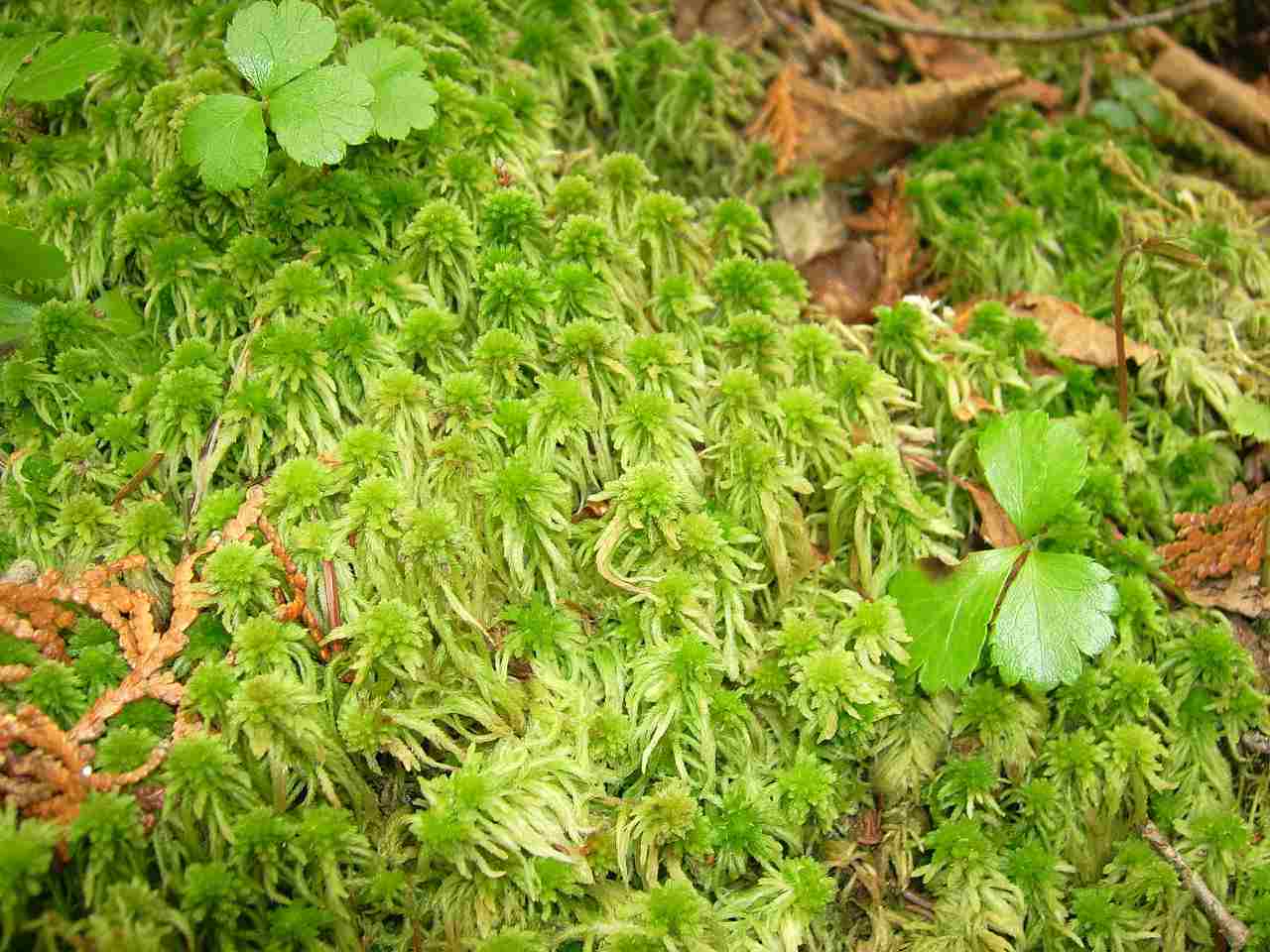
2). Ecological Role
Mosses not only have the ability to perform photosynthesis and produce their own food, but they also play a crucial ecological role in the ecosystem. One of the key roles that mosses fulfill is serving as the foundation of the food chain. As producers, mosses are able to convert sunlight, water, and carbon dioxide into biomass, which serves as a source of energy for other organisms in the ecosystem.
The biomass produced by mosses provides a vital food source for a variety of organisms, including insects, small mammals, and birds. Insects, such as beetles and ants, often feed on the moss itself or the microorganisms that live within it. These insects, in turn, become prey for larger animals, creating a complex web of interactions within the ecosystem.
In addition to being a food source, mosses also contribute to the overall biodiversity of the ecosystem. Mosses provide a habitat for a wide range of organisms, including microorganisms, invertebrates, and even other plants. The dense structure of mosses creates a microenvironment that retains moisture and provides shelter for many organisms.
Furthermore, mosses play a role in regulating the water cycle within ecosystems. Their ability to absorb and retain water helps to prevent soil erosion and maintain moisture levels in the environment. This is particularly important in areas with high rainfall or in arid regions where water availability is limited.
3). Physiological Similarity to Typical Producers
Mosses exhibit physiological features that are similar to typical producers, further supporting their classification as producers in the ecosystem. While they may not have true roots, stems, or chlorophyll pigments like higher plants, mosses have adapted unique structures and mechanisms to carry out photosynthesis and produce their own food.
One of the key adaptations of mosses is their ability to absorb water and nutrients directly through their leaf-like structures. These structures, known as phyllids, are equipped with specialized cells that can take up water and minerals from the environment. This allows mosses to obtain the necessary resources for photosynthesis and growth.
Additionally, mosses possess chloroplasts within their cells, which contain chlorophyll pigments responsible for capturing sunlight and converting it into chemical energy. Although the chloroplasts in mosses may be less developed compared to those in higher plants, they still enable mosses to perform photosynthesis and generate carbohydrates.
Furthermore, mosses have the capacity to store excess carbohydrates in specialized structures called rhizoids. These rhizoids function similarly to roots, providing anchorage and storing nutrients for future use. This storage mechanism allows mosses to survive in challenging environments and continue their photosynthetic activities even under unfavorable conditions.
4). Plant Status
Moss is classified as a producer due to its plant status and ability to carry out photosynthesis. Despite being a nonvascular plant, mosses have adapted unique mechanisms to produce their own food and contribute to the ecosystem.
As a nonvascular plant, mosses lack true roots, stems, and leaves. Instead, they have specialized structures called rhizoids that anchor them to the substrate and absorb water and nutrients. These rhizoids function similarly to roots in higher plants, allowing mosses to obtain the necessary resources for photosynthesis.
Mosses also possess chloroplasts within their cells, which contain chlorophyll pigments responsible for capturing sunlight and converting it into chemical energy. Although the chloroplasts in mosses may be less developed compared to those in higher plants, they still enable mosses to perform photosynthesis and generate carbohydrates.
Furthermore, mosses have adapted their leaf-like structures, known as phyllids, to maximize their photosynthetic capabilities. These phyllids are equipped with specialized cells that can absorb water and minerals from the environment, ensuring a steady supply of resources for photosynthesis and growth.
The ability of mosses to produce their own food through photosynthesis is a defining characteristic of producers in the ecosystem. By converting sunlight into chemical energy, mosses play a crucial role in the food chain by providing a source of energy for other organisms.
Is Moss a Producer or Decomposer?
Moss is primarily classified as a producer, although it is sometimes mistakenly seen as a decomposer. As mentioned earlier, mosses have the ability to carry out photosynthesis and produce their own food through the conversion of sunlight, carbon dioxide, water, and nutrients. This photosynthetic capability is a key characteristic of producers in the ecosystem.
Unlike decomposers, mosses do not actively break down organic matter. Instead, they rely on their photosynthetic abilities to generate energy and nutrients for their own growth and survival. Mosses obtain these resources from the environment, particularly through their rhizoids, which function similarly to roots in higher plants. These rhizoids anchor the mosses to the substrate and absorb water and nutrients, allowing them to sustain their photosynthetic processes.
While mosses do not decompose organic matter directly, they can indirectly contribute to the biodegradation process. Mosses often grow on organic substrates, such as fallen logs or decaying plant material. As they colonize these substrates, they create a microenvironment that promotes the growth of other decomposer organisms, such as bacteria and fungi. These decomposers break down the organic matter, releasing nutrients that can be taken up by the mosses and other nearby plants.
Additionally, mosses play a vital role in nutrient cycling processes. They absorb and retain nutrients from the environment, preventing them from being washed away by rain or runoff. When mosses die or shed their tissues, these nutrients are released back into the ecosystem, contributing to the overall nutrient availability for other organisms.
Is Lichen a Producer?
Lichen is primarily classified as a producer, although it also has attributes and functions of a decomposer. Lichen can carry out photosynthesis and manufacture its own food and biomass from light, carbon dioxide, water, and nutrients. However, lichen is also partly a decomposer because it includes a fungus that is in a symbiotic relationship with a photosynthetic autotrophic algae.
This symbiotic relationship allows the fungus to obtain nutrients from the algae, while the algae benefits from the protection and access to water provided by the fungus. This unique partnership enables lichen to thrive in diverse environments, including harsh conditions where other organisms struggle to survive.
The ability of lichen to break down organic matter is limited compared to true decomposers, but it does play a role in the decomposition process by contributing to the breakdown of dead plant material. Overall, lichen’s primary function as a producer and its limited decomposer attributes make it a fascinating organism with a unique trophic role in ecosystems.
Conclusion
* In conclusion, moss is classified as a decomposer due to its ability to grow on organic substrates, indirectly contribute to biodegradation, and participate in nutrient cycling processes. Its physiological features also support its role as a decomposer.
* However, moss is not a true decomposer because it is not saprophytic, meaning it does not obtain nutrients from dead organic matter. Mosses are also not heterotrophs and lack detritivorous attributes, further distinguishing them from typical decomposers.
* On the other hand, moss is considered a producer due to its photosynthetic capability, ecological role, physiological similarity to typical producers, and its status as a plant. This dual role of moss as both a producer and decomposer adds to its ecological significance.
* Moss plays a crucial role in ecosystems as a decomposer, contributing to the breakdown of organic matter and nutrient cycling. At the same time, it functions as a producer, harnessing energy through photosynthesis and supporting other organisms in the food chain. Moss’s unique trophic role highlights its importance in maintaining ecological balance and biodiversity.
FAQs
1). What Plants are Decomposers?
No plant is a true decomposer. However, some plants, like moss, are often referred to as decomposers due to certain characteristics. Mosses are classified as decomposers because they often grow on organic substrates, indirectly contribute to biodegradation, and are involved in the nutrient cycling process. They also possess physiological features that aid in decomposition.
It’s important to note that other organisms, such as lichens, are not actually plants but rather symbionts consisting of a fungus and an alga or cyanobacterium. Lichens have a unique ecological role and can be considered both producers and decomposers.
While no plant can be classified as a true decomposer, mosses and lichens play important roles in ecosystem processes. Mosses contribute to nutrient cycling and biodegradation, while lichens have a symbiotic relationship that allows them to both produce and decompose organic matter.
2). What are the 4 Main Decomposers?
The four main decomposers in ecosystems are bacteria, fungi, arthropods like crickets, and soft-bodied invertebrates like earthworms and slugs. Bacteria and fungi are considered primary decomposers, also known as saprophytes. They play a crucial role in breaking down organic matter and releasing nutrients back into the environment. These microorganisms have the ability to break down complex organic compounds into simpler forms that can be absorbed by plants and other organisms.
On the other hand, arthropods like crickets and soft-bodied invertebrates such as earthworms, marine worms and slugs are classified as secondary decomposers or detritivores. They feed on the partially decomposed organic matter produced by bacteria and fungi, further breaking it down into smaller particles. These detritivores play an important role in accelerating the decomposition process and recycling nutrients.
Scavengers like vulture, hyenas and coyotes are sometimes classified as decomposers in ecosystems.
3). What are Decomposer Examples?
Decomposers are organisms that break down organic matter and play a crucial role in nutrient recycling. Some examples of decomposers include bacteria, fungi, detritivorous arthropods, and soft-bodied invertebrates. Bacteria and fungi are primary decomposers, as they break down complex organic compounds into simpler forms.
Arthropods like crickets and soft-bodied invertebrates such as earthworms and slugs are secondary decomposers or detritivores, as they feed on partially decomposed organic matter. These decomposers accelerate the decomposition process and release nutrients back into the environment.
4). Is Algae a Decomposer?
Algae is not classified as a decomposer. While algae plays a crucial role in aquatic ecosystems as primary producers, they do not have the ability to break down complex organic matter like decomposers do. Algae use photosynthesis to convert sunlight, carbon dioxide, and water into energy-rich organic compounds.
They are essential for oxygen production and nutrient cycling in aquatic environments. However, decomposers, such as bacteria and fungi, are responsible for breaking down dead organic matter and recycling nutrients back into the ecosystem. Algae and decomposers have distinct trophic roles in the ecosystem, with algae being producers and decomposers being decomposers.
5). Is a Snail a Decomposer?
Snails are not classified as decomposers. While they play a role in the decomposition process, they are considered detritivores, which means they consume decaying organic matter. Snails primarily feed on dead plant material, such as leaves and decaying vegetation, breaking it down into smaller particles.
However, they do not have the ability to break down complex organic matter like true decomposers, such as bacteria and fungi. Snails act as secondary decomposers by further breaking down the organic matter consumed by other decomposers. Their feeding habits contribute to nutrient cycling in ecosystems, but they are not primary decomposers.
6). Is a Tree a Decomposer?
A tree is not classified as a decomposer. While trees play a crucial role in ecosystems, they are considered producers rather than decomposers. Trees are vascular plants that use photosynthesis to convert sunlight into energy, producing their own food. They are not heterotrophs that rely on consuming organic matter for nutrition.
However, trees indirectly contribute to the decomposition process. When leaves, branches, or other organic material from trees fall to the ground, they provide a substrate for decomposers like bacteria and fungi to break down. These decomposers then release nutrients back into the soil, which can be taken up by the tree’s roots and used for growth.
7). Is Mushroom a Decomposer?
Mushrooms are saprophytic fungi, and play a vital role in the decomposition process. As decomposers, mushrooms obtain their nutrients by breaking down dead organic matter. They release enzymes that break down complex molecules into simpler forms, allowing them to absorb the nutrients they need for growth. This process helps to recycle nutrients back into the ecosystem.
Mushrooms are not classified as producers because they do not possess chlorophyll and cannot perform photosynthesis. Instead, they rely on organic matter as their source of energy. They thrive in environments rich in decaying material, such as fallen trees or leaf litter.
8). Is Grass a Decomposer?
Grass is not classified as a decomposer. Unlike fungi or bacteria, grass does not have the ability to break down dead organic matter and obtain nutrients from it. Grass is a plant that belongs to the group of producers. It is capable of photosynthesis, using sunlight to convert carbon dioxide and water into glucose and oxygen. This process allows grass to produce its own food and energy.
Grass plays an important role in ecosystems as a primary producer. It forms the base of many food chains, providing food and habitat for various organisms. Grazing animals, such as cows or deer, rely on grass as a source of nutrition. Additionally, grass helps to prevent soil erosion and contributes to the overall health of the environment.
9). Is Lichen a Decomposer?
Lichen is not classified as a decomposer. While lichen includes fungus, it is not a true decomposer like free-living fungi. Lichen is a symbiotic organism consisting of a fungus and an alga or cyanobacterium. The fungus provides structure and protection, while the alga or cyanobacterium provides food through photosynthesis.
This mutualistic relationship allows lichen to survive in harsh environments where neither the fungus nor the alga or cyanobacterium could survive alone.
10). Is Bacteria a Decomposer?
Bacteria are indeed decomposers. They play a crucial role in breaking down organic matter and recycling nutrients in ecosystems. Bacteria have the ability to break down complex organic compounds into simpler forms that can be absorbed by other organisms. This process, known as decomposition, is essential for the cycling of nutrients in the environment.
Bacteria are responsible for breaking down dead plants and animals, as well as other organic materials such as leaves and wood. They are one of the main decomposers in terrestrial and aquatic ecosystems, contributing to the overall health and balance of these ecosystems.
11). Is Fungi a Decomposer?
Fungi, like bacteria, are also decomposers in ecosystems. They play a vital role in breaking down organic matter and facilitating nutrient cycling. Fungi have the ability to break down complex organic compounds into simpler forms that can be utilized by other organisms. This process of decomposition is crucial for the recycling of nutrients in the environment.
Fungi are responsible for breaking down dead plants and animals, as well as other organic materials such as wood and leaves. They work alongside bacteria as key decomposers in terrestrial and aquatic ecosystems, contributing to the overall sustainability of these ecosystems.
12). Is Moss a Producer Consumer or Decomposer?
Moss can be classified as a producer, as it has the ability to perform photosynthesis. Through photosynthesis, mosses can convert sunlight, water, and carbon dioxide into energy-rich organic compounds. This process allows them to produce their own food and contribute to the overall energy flow in ecosystems.
Mosses play an important ecological role by providing habitat and food for various organisms, such as insects and small animals. Additionally, mosses have physiological similarities to typical producers, such as vascular plants, in terms of their structure and function.
13). What Kind of Plant is Moss?
Moss is a type of non-vascular plant. It lacks specialized tissues for transporting water and nutrients, which is a characteristic of vascular plants. Mosses rely on direct absorption of water and nutrients from their surroundings. They are typically found in moist environments, such as forests, bogs, and wetlands.
Mosses play important ecological roles, such as providing habitat and retaining moisture in the environment. Despite being non-vascular, mosses are still considered plants due to their ability to photosynthesize and produce their own food. This distinguishes them from other organisms like fungi or bacteria.
14). Is Moss a Heterotroph?
Moss is not a heterotroph. Heterotrophs are organisms that obtain their energy and nutrients by consuming other organisms or organic matter. Moss, on the other hand, is an autotroph. Autotrophs are organisms that can produce their own food through photosynthesis.
Mosses have the ability to photosynthesize, which means they can convert sunlight, water, and carbon dioxide into glucose and oxygen. This process allows them to produce their own food and energy. Mosses do not rely on consuming other organisms or organic matter for their survival.
Instead, mosses obtain water and nutrients directly from their surroundings through absorption. They have specialized cells that can absorb water and nutrients from the environment, such as rainwater or moisture in the soil. This absorption process allows mosses to thrive in moist environments like forests, bogs, and wetlands.
15). Is Moss a Seed Producing Plant?
No, moss is not a seed-producing plant. Mosses reproduce through spores, not seeds. Spores are tiny reproductive structures that are released into the environment and can develop into new moss plants under favorable conditions. Unlike seed-producing plants, mosses do not have flowers, fruits, or cones. Instead, they have simple structures that produce and release spores.
These spores are dispersed by wind or water and can germinate to form new moss plants. This unique method of reproduction allows mosses to colonize a wide range of habitats, from damp forests to rocky surfaces.
16). Is Moss an Algae or a Plant?
Moss is a plant, not an algae. While algae and moss may share some similarities, they belong to different taxonomic groups. Moss is classified as a simple non-vascular plant, meaning it lacks specialized tissues for transporting water and nutrients. Unlike algae, mosses have structures such as stems, leaves, and rhizoids.
These structures allow mosses to anchor themselves to surfaces and absorb water and nutrients from their environment. Mosses also reproduce through spores, not through the reproductive cells found in algae.
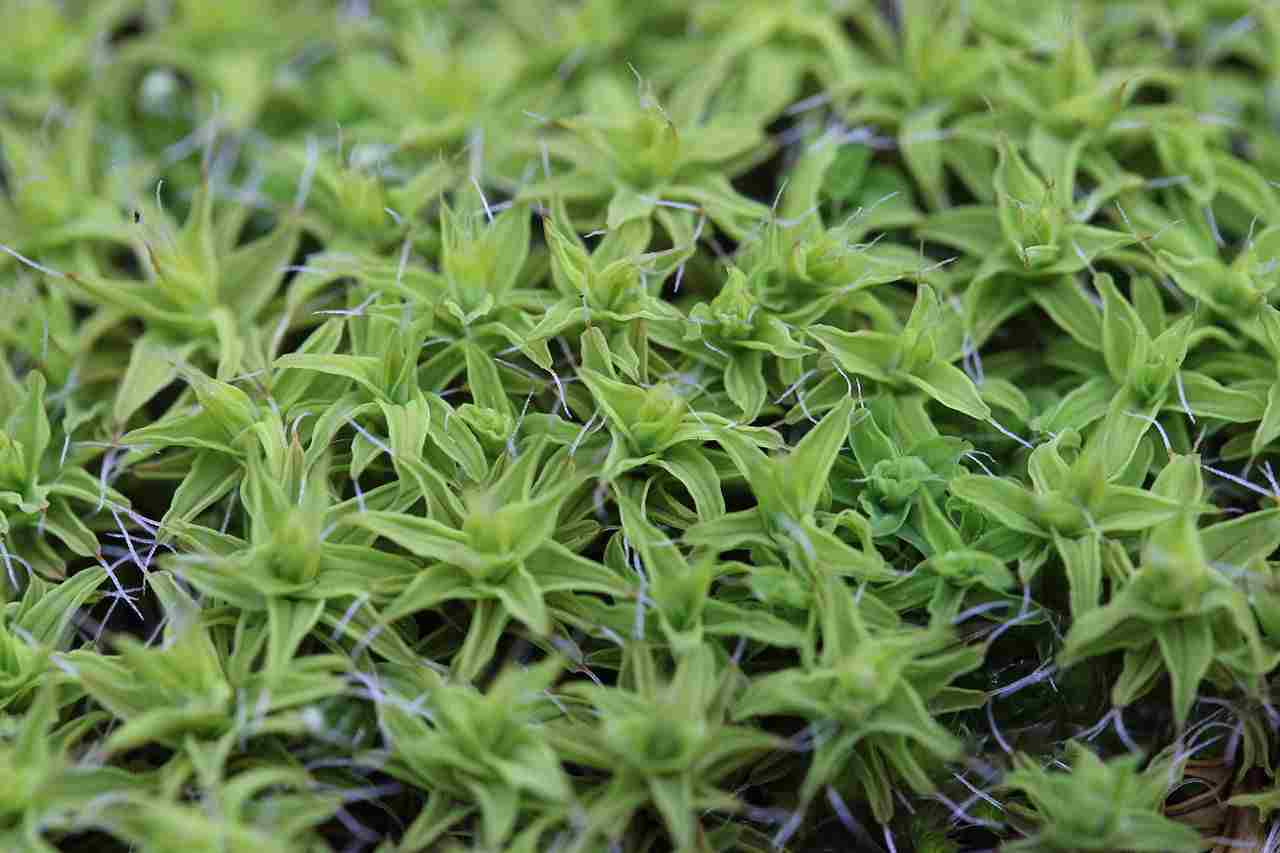
17). Is Moss Plant a Fungus?
No, moss is not a fungus. Moss is a type of plant that belongs to the Bryophyte group. While moss and fungi often grow together in symbiotic relationships, they are distinct organisms.
Mosses have specialized structures such as stems, leaves, and rhizoids, which allow them to absorb water and nutrients from their environment. Fungi, on the other hand, are heterotrophic organisms that obtain nutrients by breaking down organic matter. So, while moss and fungi may be found together, they are not the same thing. Moss is a plant, not a fungus.
18). Is Moss Plant a Fungus or Bacteria?
No, moss is neither a fungus nor bacteria. Moss is a non-vascular autotroph, belonging to the Bryophyte group. It is a distinct type of plant that has its own unique characteristics.
Mosses have the ability to photosynthesize, producing their own food through the process of photosynthesis. Unlike fungi and bacteria, mosses do not rely on breaking down organic matter for nutrients. Instead, they obtain nutrients directly from their environment. So, moss is not classified as a fungus or bacteria, but as a non-vascular autotroph.
19). What is a Lichen Classified As?
Lichens are classified as autotrophic symbionts. They are unique organisms that consist of a symbiotic relationship between a fungus and an alga or a cyanobacterium. This symbiotic partnership allows lichens to thrive in various environments, including extreme conditions such as deserts and tundras.
The fungus provides a protective structure and absorbs water and nutrients, while the alga or cyanobacterium performs photosynthesis to produce food for both partners. This mutualistic relationship makes lichens capable of being self-sufficient and functioning as autotrophs.
20). What Consumer is Lichen?
Lichen is not considered a consumer in the traditional sense. While it does have some saprophytic or decomposer characteristics, lichen is primarily classified as a producer. This is because lichen consists of a symbiotic relationship between a fungus and an alga or cyanobacterium, allowing it to perform photosynthesis and produce its own food.
The fungus provides a protective structure and absorbs water and nutrients, while the alga or cyanobacterium carries out photosynthesis. This unique partnership makes lichen self-sufficient and capable of functioning as an autotroph.
21). Why is Lichen Considered Both a Producer and Decomposer?
Lichen is considered both a producer and a decomposer because of its unique symbiotic nature, which is made up of a partnership between a fungus and an alga or cyanobacterium.
The fungus provides a protective structure and absorbs water and nutrients, while the alga or cyanobacterium carries out photosynthesis, producing food for both partners. This makes lichen a producer, as it can generate its own energy through photosynthesis. However, lichen also exhibits decomposer characteristics. The fungus component of lichen can break down organic matter, contributing to the decomposition process.
22). What Type of Plant is Lichen?
Lichen is not classified as a plant. Instead, it is a unique organism that consists of an autotrophic symbiont, which is either an alga or a cyanobacterium, and a fungus. This symbiotic relationship allows lichen to thrive in various environments, including extreme conditions where other organisms struggle to survive.
The autotrophic symbiont in lichen carries out photosynthesis, producing food for both itself and the fungus. This makes lichen an autotroph, similar to plants, as it can generate its own energy from sunlight. However, unlike plants, lichen does not have roots, stems, or leaves. Instead, it forms a thallus, which is the main body structure of lichen.
The fungus component of lichen provides a protective structure and absorbs water and nutrients from the environment. It also plays a crucial role in the reproduction and dispersal of lichen. The fungus and the autotrophic symbiont work together in a mutually beneficial relationship, where both partners rely on each other for survival.
23). Is a Lichen a Plant or Not?
Lichen is not classified as a plant. It is a unique organism that consists of a symbiotic relationship between an autotrophic symbiont, which can be an alga or a cyanobacterium, and a fungus. This partnership allows lichen to thrive in various environments, including extreme conditions where other organisms struggle to survive.
Unlike plants, lichen does not have roots, stems, or leaves. Instead, it forms a thallus, which is the main body structure of lichen. The autotrophic symbiont in lichen carries out photosynthesis, similar to plants, producing food for both itself and the fungus. This makes lichen an autotroph, capable of generating its own energy from sunlight.
The fungus component of lichen provides a protective structure and absorbs water and nutrients from the environment. It also plays a crucial role in the reproduction and dispersal of lichen. The fungus and the autotrophic symbiont work together in a mutually beneficial relationship, where both partners rely on each other for survival.
24). Is Lichen a Terrestrial Plant?
Lichen is not a terrestrial plant. It is a unique organism that consists of a symbiotic relationship between an autotrophic symbiont, which can be an alga or a cyanobacterium, and a fungus. This partnership allows lichen to thrive in various environments, including terrestrial habitats. Unlike terrestrial plants, lichen does not have roots, stems, or leaves.
Instead, it forms a thallus, which is the main body structure of lichen. The autotrophic symbiont in lichen carries out photosynthesis, similar to terrestrial plants, producing food for both itself and the fungus. This makes lichen an autotroph, capable of generating its own energy from sunlight. The fungus component of lichen provides a protective structure and absorbs water and nutrients from the terrestrial environment.
25). Is Lichen a Flowering Plant?
Lichens are not flowering plants or angiosperms. While they may resemble plants in appearance, lichens are actually a unique symbiotic organism consisting of a fungus and an alga or cyanobacterium. This partnership allows lichens to survive in various environments, including terrestrial habitats.
Unlike flowering plants, lichens do not produce flowers, fruits, or seeds. Instead, they reproduce through the dispersal of fungal spores or algal cells.
26). Is Lichen a Symbiotic Plant?
Lichens are indeed a symbiotic organism, but they are not classified as plants. Lichens are a unique partnership between a fungus and an alga or cyanobacterium. This symbiotic relationship allows lichens to thrive in a variety of environments, including terrestrial habitats.
The fungus component of lichens provides structural support and protection, while the alga or cyanobacterium component performs photosynthesis to produce energy. This mutualistic relationship is essential for the survival of lichens, as both partners rely on each other for nutrients and protection.
While lichens may resemble plants in appearance, they lack the key characteristics that define plants, such as roots, leaves, and vascular tissues. Instead, lichens have a thallus, which is a unique structure formed by the intertwined hyphae of the fungus and the photosynthetic cells of the alga or cyanobacterium.
27). Is Lichen an Example of a Symbiotic Plant?
Lichen is not considered an example of a symbiotic plant. While lichens do have a symbiotic relationship between a fungus and an alga or cyanobacterium, they are not classified as plants. Lichens are a unique organism that combines the characteristics of both fungi and algae or cyanobacteria.
The fungus provides structure and protection, while the alga or cyanobacterium performs photosynthesis. This mutualistic relationship allows lichens to survive in various environments and conditions.
28). Where Do Lichens Grow?
Lichens can be found in various environments and conditions, including forests, deserts, tundras, and even on rocks and tree bark. They are able to thrive in extreme climates, such as the Arctic and high mountain regions, where other organisms struggle to survive.
Lichens are also commonly found in polluted areas, as they have the ability to tolerate high levels of air pollution. Their adaptability and resilience allow them to colonize and grow in diverse habitats.

